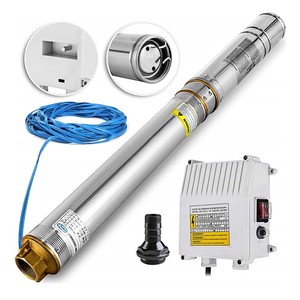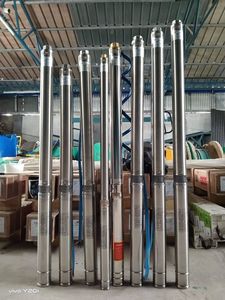
All categories
Featured selections
Trade Assurance
Buyer Central
Help Center
Get the app
Become a supplier

(19581 products available)



































Rechargeable power tool options are available and do not require a power outlet, which makes them ideal for several projects, especially outside the home and for big construction projects. In other cases, corded tools can do the same work faster or for a longer duration because their motor power is stronger. Following is a breakdown of the different forms that are often encountered.
Drills are some of the most famous power tools, and they come in handy when making holes in different materials. Corded drills are mostly used where a lot of drilling is required, as with large construction work. Cordless drills, though, are portable and can easily be used for putting screws in or for drilling holes in general in the house.
Saws are used to cut wood, metal, and even masonry. Circular saws are generally used for straight cuts, while jigsaws makes intricate cuts. A reciprocating saw is useful during renovation works because it helps cut parts that do not require precision.
Sanders assist in smoothing surfaces by removing a thin layer on the surface. Belt sanders are best used for large flat areas, while detail sanders are meant for corners and other small areas.
Grinders are used mostly for grinding or cutting to provide a smooth finish on an object. Angle grinders are mostly used on huge tasks and cutting discs on metal or masonry.
Power tools can be applied in almost every industry, but they are mostly used in construction, manufacturing, carpentry, auto mechanics, and even home improvement. The following are some examples of typical applications in several industries.
Drills, saws, sanders, and grinders are applied in this industry to build new structures, roads, and bridges. Drills are used for putting holes in materials like wood and metal. Saws are used to cut materials to the right size. Sanders smooth the rough surface of materials to make them ready for application, and grinders provide a smooth finish to the surface of materials used, especially metals.
In the manufacturing industry, power tools help in assembling products, quality control, and maintenance. For instance, drills are applied in the assembly of products such as putting screws in furniture manufacturing.
Sanders are also used in the automotive industry for painting cars through surface smoothing, grinding edges, and creating textures. Sanders are used in the automotive industry as they smooth surfaces for painting, creating sharp edges, and finishing certain components.
Drills and saws are the drills that always come in handy for various repairs and improvement activities within the house, such as putting furniture together, fixing new cabinets, and even changing the wall structures.
Motor Power
The strength of the power tools is evaluated by the type of motor that is installed in it. Corded tools are known to have stronger motors than cordless tools. Usually, in drills, for instance, the motor strength is given in the form of a drill, which is measured using watts or amps for corded tools and volts for corded tools.
Battery life
It is a vital consideration for cordless power tools. Lithium-ion batteries have great value because they have low self-discharge and can take and hold a charge quickly. Battery life is measured in volts, and the higher the volts, the stronger the battery.
Speed and control
Variable speed settings are common for drills so that users can change the speed to provide the best hole-digging or screw-driving conditions. Controls for torque let the motor spin with a high or low rpm.
Tool materials
Power tools comprise metal and plastic. The working parts of the tool are mostly made of steel or other hard alloys. These parts face friction and wear, so they need to be made of very strong materials. Cases or housings are made of hard plastic or metal. These areas serve to protect the inner workings of the tool. Bearings are made of steel or have steel balls and resemble wheels, enabling parts that rotate move smoothly. Motors consist of copper coils and magnets, which are responsible for generating the rotational movement. Grips are made of rubber or soft plastic to provide comfort and a firm hold.
The power tools' installation methods differ but include such general steps as the incorporation of batteries or plugging the tools into electricity and the setting of accessories.
Correct usage ensures durability. Users have to study the manual and safety precautions of the device to comprehend the manner and safety measures of the device. The device also has to be tested to ascertain that it is operating properly at a low speed before using it in a task. After use, the tool has to be stored correctly.
When choosing cheap power tools, there are various factors one needs to consider.
Tool longevity should be one of the main factors to consider when purchasing tools. Pick those formed of steel, aluminum, and heavy plastic, which are the materials of choice for most strong tools. Cordless ones designed for intense use also last longer than their corded counterparts.
If the tools are cordless, one has to look for tools with lithium-ion batteries. They do not take long to recharge, and they retain the charge for a longer duration. Consider tools with battery sharing features, too, as it becomes easier for the batteries to be interchanged.
Choose power tools with strong motors for the work they need to perform. For drills, higher torque is better, while higher RPM is better for saws.
Comfort should also be considered since the works tend to make one tired if the tools used are uncomfortable. Seek tools with comfortable grips, are lightweight, and have less vibration to reduce fatigue.
Some tools have extra bits, blades, and batteries that could save money. Saws such as circular saws come with various blades for different tasks.
Inquire about the brand and warranty. Some tools are better formed than others, and some companies have stronger reputations for forming products that last. A tool's quality is also determined by the warranty length; a longer warranty typically indicates a better quality tool.
Budget should be considered, but the above factors should be given priority. Some tools might be more expensive, but they are strong and durable.
A1: Hand tools do not have motors or batteries. They are operated physically through human power. Examples are wrenches, hammers, screwdrivers, and pliers.
A3: Cordless power tools are portable and more convenient but have limited battery life. Corded power tools provide continuous power and are typically more powerful but less portable.
A4: Some examples of budget-friendly power tools for home repair include a corded or cordless drill, a circular saw, a reciprocating saw, and an angle grinder.